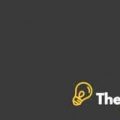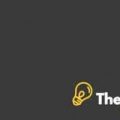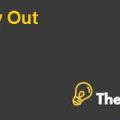
Introduction
Hallstead Jewelers was founded in late 1930 s by the grandfather of its present owners. Currently, it is run by two sisters, Gretchen Reeves and Michaela Herd. After the death of their father who was running the store, they decided to renovate and relocate the store because there was no significant growth after the year 1999 and profits also decreased.
They renovated and relocated the store with almost double spaced store and they increased the number of sales staff to provide better services to their customers. This expansion proved wrong for Hallstead Jewelers.Also,its income statement for the year 2006 shows loss with the double figure of last year’s profit.
It was an alarming situation for both sisters that even after expansion and redecoration they were incurring significant loss; therefore they asked their accountant to analyze their current strategies to identify where they are lacking.Moreover, they emphasized to calculate the break even in terms of numbers and revenue for last three operating years.
Break even in Sales Dollars and in Number of Sales Tickets
The break even point and break even are calculated from the figures found in exhibit 1 and 2.The break even points show the company’s position that at the break even point the company has covered all its cost and the units sold above the break even points will be considered as profit.
Break even point in sales ticket is calculated by dividing the fixed cost of each year with the average contribution for each year. The fixed cost is calculated by adding the values of salary, administration cost, rent, advertising expense, depreciation charge and the other miscellaneous expenses.
The break even revenue is calculated by multiplying the break even units with the average selling cost per ticket. Break even units are increasing year by year because fixed cost is also increasing. Therefore,a number of units is required to cover the fixed cost, hence the number of break even units and the amount of break even revenue in dollars increased.
In the first question the margin of safety in terms of units’ revenue and percentage is calculated. The margin of safety in terms of units is calculated by subtracting the value of total units with the break even units. The value of margin of safety in term of revenue is calculated by multiplying the margin of safety units with the selling price per unit.
The margin of safety shows that the how many units and how much revenue the company has in terms of safety. It means loss of all the margin of safety units and revenue will result in reaching a break even point for the company. In that case, the percentage of margin of safety is decreasing because of the increase in amount of break even units. In year 2006, it had negative value because the number of sales unit did not even cover the break even units and generated loss of 40,6000 dollars.
The increase in fixed cost is the similar as the increase in the amount of rent, which is the twice the amount of the last two years due to the increase in the floor surface and the sales per square feet also decreases, which could be due to the relocation of the store cause of the increase in the amount of break even units. This increase of break even units results in decreasing the margin of safety stock.
Reduce Prices to Bring in More Customers
According to the estimates of the consultant it is expected that the reduction in cost by 10% will increase the sale of number of units, which will allow Hallstead to improve its break even and margin of safety position.The decrease in number of prices will increase the amount of unit sold to 7500 per year.
This increase in units increases the revenue and proves to be beneficial. It increases the value of contribution per year and hence, it reduces the number of break even units. The decrease in number of break even units’ means less number of units are required to cover fixed costs.Hallstead Jewelers Case Solution
The revised break even units are 3711 for the year 2003, 4054 units for the year 2004 and 7536 units for the year 2006. Similarly the increase in units sold and decrease in price reduces the required level of break even revenue as the break even units are multiplying with the low price per sales ticket.
The decrease in number of break even units increases the percentage of margin of safety for all three years. However,still more break even units are required than the amount of the sales unit.Nonetheless,the margin value of safety was negative for the year 2006 and there was a low percentage of safety stock for the year 2003 and 2004 as well...........................
This is just a sample partial case solution. Please place the order on the website to order your own originally done case solution











